[brightcove videoID=4176564268001 playerID=940176129001 height=400 width=630]
Sony Cyber-shot HX90V Review: Hands-on First Look
Every time we meet up with a camera manufacturer these days, we hear much the same story. The market for compact cameras with built-in lenses is collapsing under the onslaught of always-in-your-pocket smartphones, with only a few camera types that manage to offer something significantly different continuing to sell well.
One type of camera that has continued to thrive is the ‘Travel Zoom’, or pocketable compact with a long zoom lens. Over the past couple of years this class has been dominated by Panasonic with its Lumix DMC-TZ60 and TZ70, which feature built-in viewfinders and plenty of manual control for the photography enthusiast. Sony’s latest model, the Cyber-shot DSC-HX90V, takes aim squarely at wresting the crown from the TZs.
Indeed while Panasonic could be accused of resting on its laurels, making only minor changes in this year’s TZ70, Sony has gone back to square one and designed a whole new camera from the ground up. The result is a frankly gorgeous little camera that borrows much of its design language from its highly-regarded RX100 Mark III enthusiast compact, including a round-lens control ring and a pop-up viewfinder. We had the opportunity to get our hands on an early sample of the HX90V, and our initial impressions are very positive indeed.
Compact size
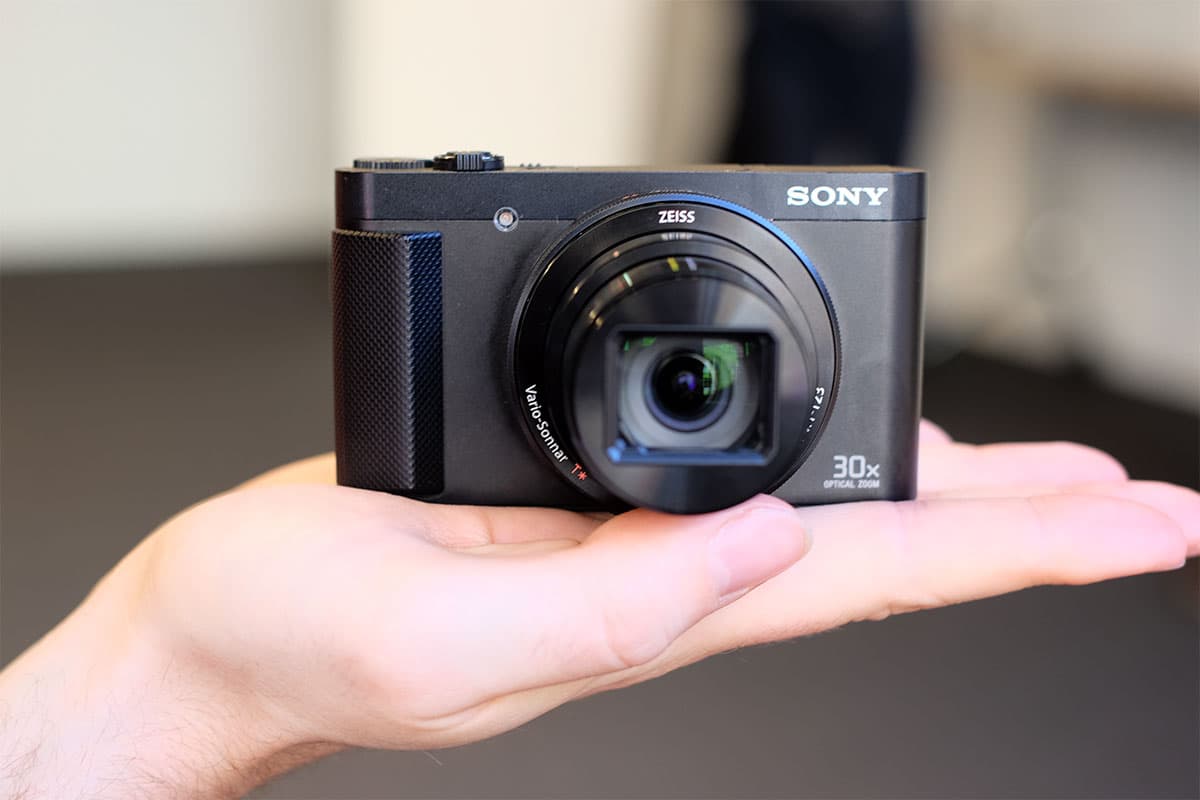
The diminutive HX90V is eminently pocketable
The first thing that strikes you on seeing the HX90V is how small it is; just 102mm x 58mm x 36mm and 245g. Compared to either its predecessor, the HX60V, or the TZ70 it’s clearly more pocketable. In turn, this means that it’s more likely to be carried around with you all the time, which is the whole raison d’être of this type of camera. Yet it still fits in a 24-720mm equivalent 30x optical zoom, with a maximum aperture of f/3.5-6.4. The all-new Zeiss Vario-Sonnar T* lens unit has been made 30% smaller than that in the HX60V, achieved by the use of a floating rear optical group and an advanced aspherical element. The camera includes 5-axis image stabilisation, by a combination of optical and electronic means.
Despite the small body size, the HX90V feels pretty secure in your hand due to the addition of a pronounced handgrip, and notably better than its doppelganger the RX100 III. Indeed we suspect many RX100 owners will look at this design feature with considerable envy. The grip doesn’t stick out any further than the lens barrel, so it has no real impact on the camera’s pocketability.
Pop-up viewfinder and tilting screen
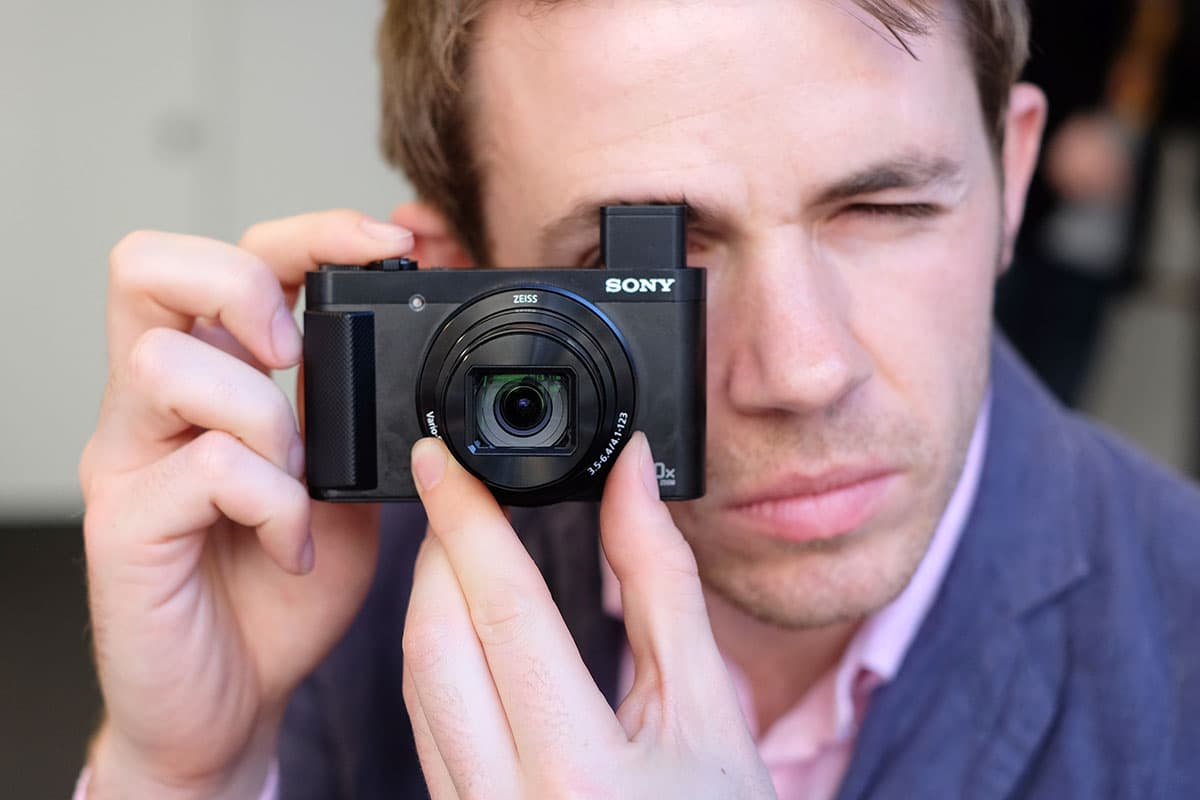
The HX90V’s pop-up viewfinder is similar in design to that on the RX100 III
The second big deal about the HX90V is its pop-up electronic viewfinder, which is similar to that found on the RX100 III, although at 638,400 dots it’s lower in resolution. It’s always great to see an EVF on a small camera like this; it’s really useful when shooting towards the long end of that long zoom, or in bright light when the LCD screen can be difficult to see. We’re also really pleased to see that, unlike on the RX100 III, the camera no longer automatically turns off when you push the EVF back down into the body.
Sony claims that its finder is larger, brighter and higher contrast than the TZ70’s infamously small unit, and while we’re happy with the first two, we’re less pleased about the third. Sony’s OLED finders have frequently been too high in contrast, making shadow detail impossible to see in bright light, and it sounds like the HX90V will be no different.
One advantage offered by the viewfinder’s pop-up design is that it allows the screen to tilt upwards 180°, which helps with shooting low-angle shots and, of course, self-portraits.
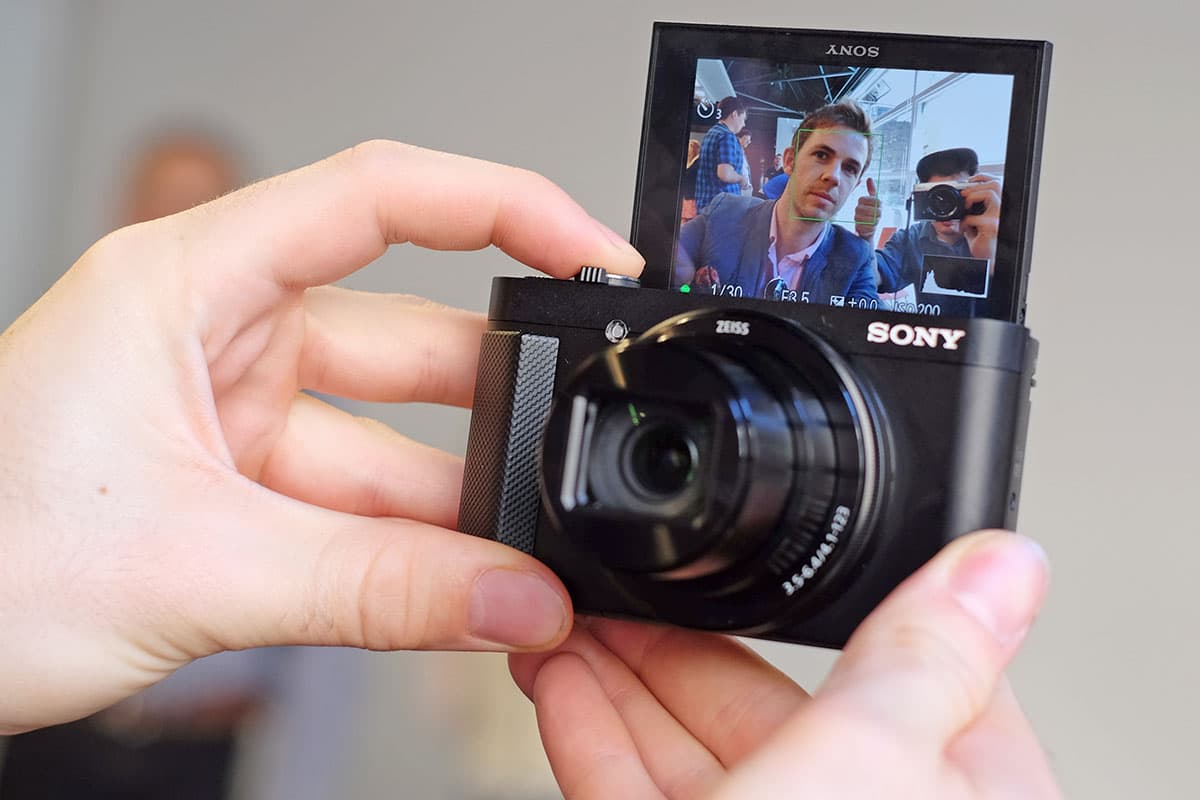
The HX90V has a tilting screen that’s perfect for selfie lovers
We’re disappointed though that the screen isn’t touch-sensitive, as this tends to make operation much quicker and easier with cameras this small. The 3” screen has a 4:3 aspect ratio, which means its entire area is used to preview the image during shooting, resulting in a large, clear view.
Manual controls
In terms of controls, the HX90V again borrows heavily from the RX100 series, with a round-lens control ring supplemented by a cluster of rear buttons. As on the RX100 the lens ring is clickless, which always polarizes opinion; some photographers don’t mind, but others hate the lack of tactile feedback when changing settings. We’d suggest giving the camera a try before you buy.
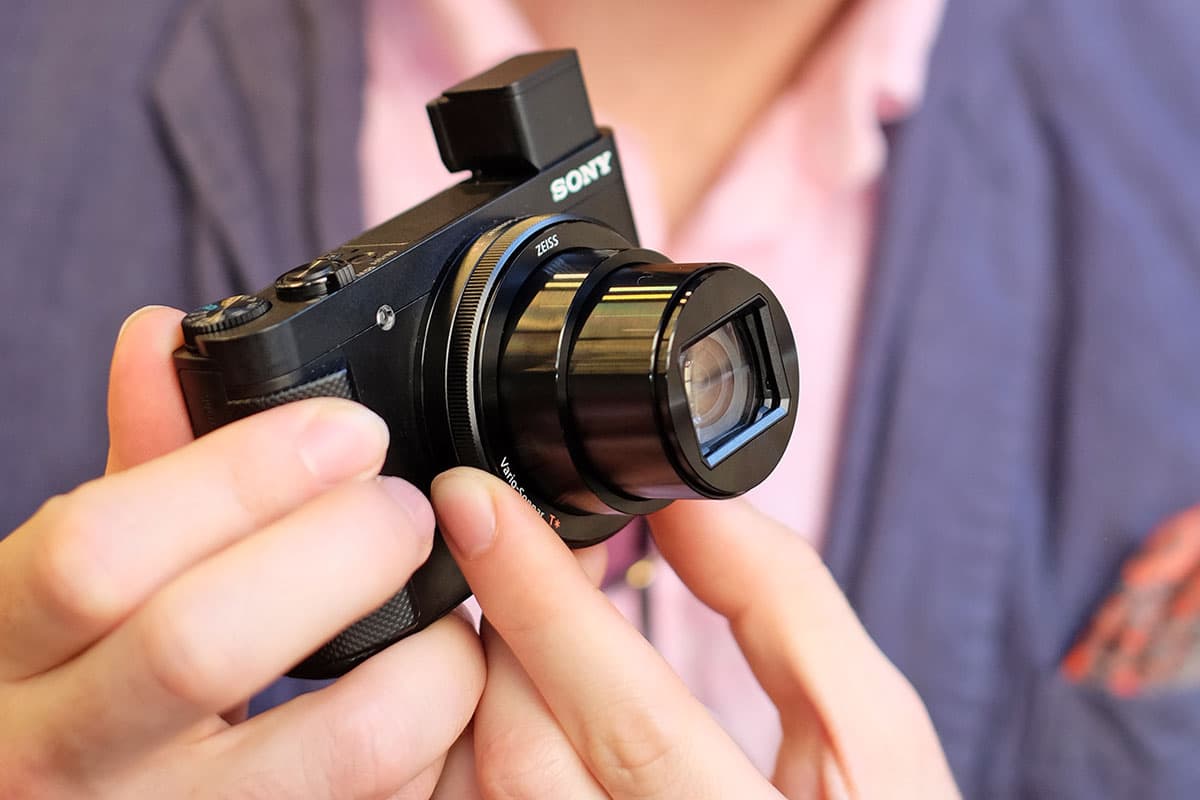
The dial around the lens can be used to change settings
One notable missing feature is raw image recording, which is available on the Panasonic TZ60 and TZ70. We’re somewhat surprised by this, on a camera that’s clearly aimed at least partially towards enthusiast photographers, and we suspect it will cost Sony some sales amongst that constituency. That said, for the more point-and-shoot inclined, or those who are prepared to get things right in-camera, it shouldn’t really matter too much. Unlike the TZ70, the HX90V does have built-in GPS for geotagging your images on your travels.
Sony says it’s made various other changes in response to feedback from HX60V owners. Image processing has been changed to use less noise reduction smoothing, which should give more detail at the expense of slightly higher levels of noise, particularly at higher ISOs. There’s a menu setting to allow fast zooming when using the lens control ring, so you can get from one end of the lens to the other in a second or two. It’s also now possible to combine autobracketing with the self-timer, so a set of bracketed exposures can be shot with a single press of the shutter.
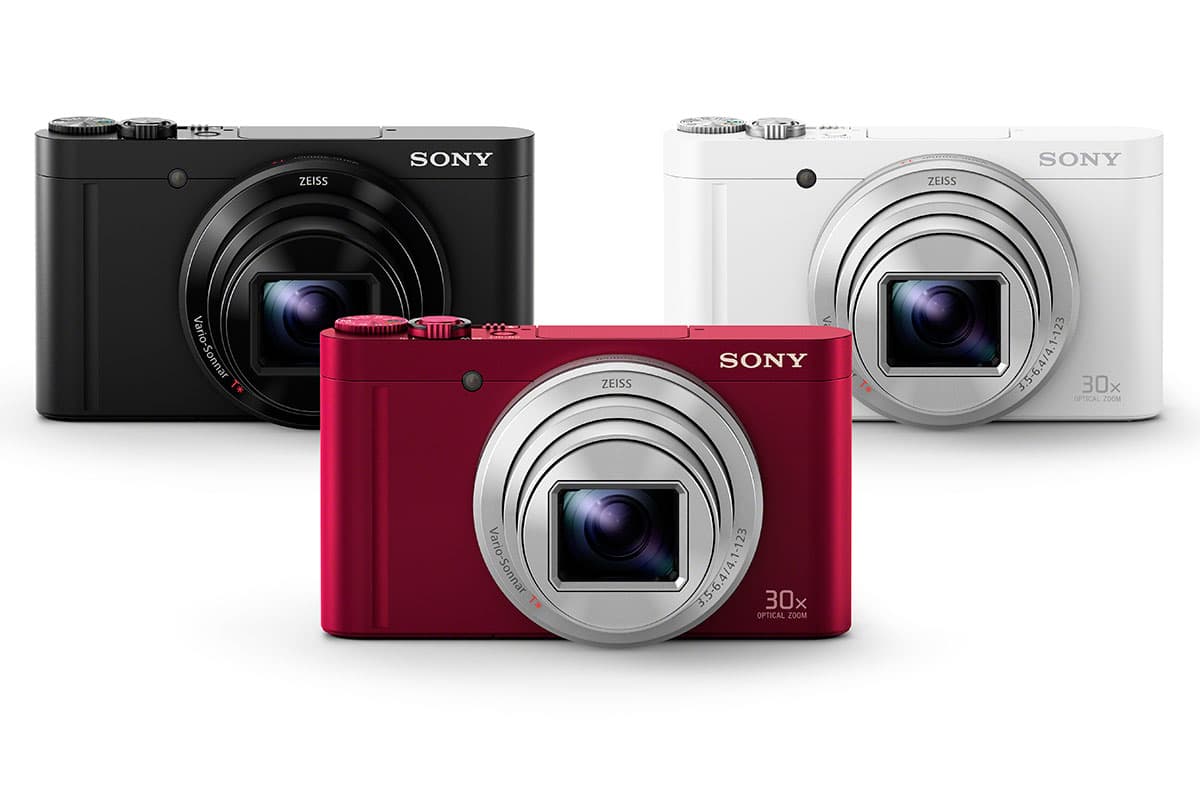
The simplified Sony Cyber-shot DSC-WX500 will come in a choice of three colours: black, white or red
The camera will come in two versions; the HX90V will cost £340, while the HX90 will be £330, the only difference being that it lacks built-in GPS. Sony is also announcing the £280 WX500, which is based on the same core components (lens, processer etc), but lacks an electronic viewfinder, lens control ring, or handgrip.
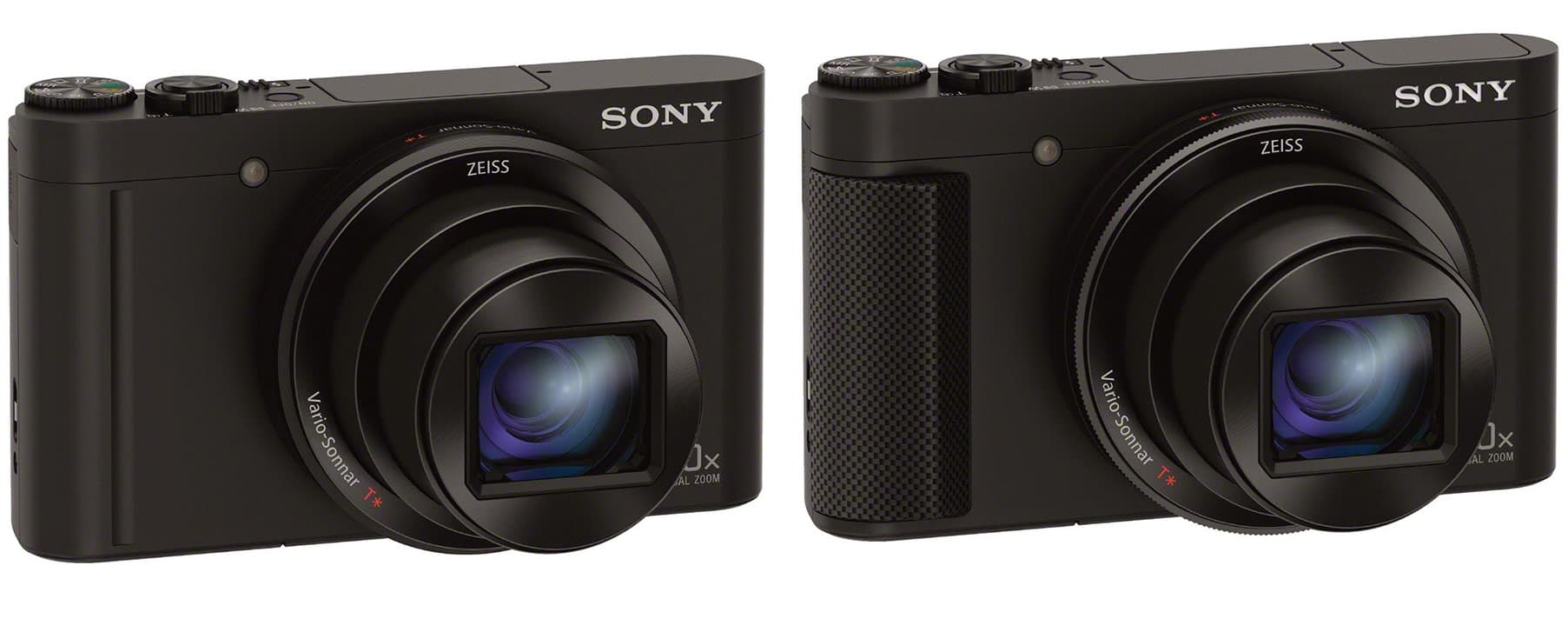
The WX500, left, lacks the lens control ring and the handgrip
On first impressions we’re really excited by the HX90V, and with its compact size, pop-up viewfinder and manual controls, think it will vie strongly with the TZ70 for the title of best travel zoom compact. Indeed if it had raw image recording (and even better a touchscreen) then on paper it would be a shoe-in. We hope to get our hands on one very soon for a full review.







